I had long planned to write a last email including a 'highlight reel' of our four-month long adventure with the most memorable sights of our journey that began in Latvia in August and ended in Denmark in mid December. However, when I began this post a couple of days ago, I realized it was impossible for me to try and wade through 140 days' worth of photos and basically find just one per day to reflect that day.
So my parameters changed to come up with photos that range, I like to think, from being enjoyable to see, thought-provoking, unusual or amusing, wonderful memories and/or showed the overwhelming kindness of people we met along the way.
August 14th: Being a knitter for more than 50 years, I loved seeing the hand-knitted items that were so plentiful in Riga, Latvia, our first stop.
The Jewish Museum in Riga depicted the horrors suffered by Latvian Jews at the hands of the Germans during WWII.
August 17th: The Hill of Crosses near Siauliai in northern Lithuania was a place of Christian pilgrimage and a symbol of peace with over 100,000 crosses.
In the small town was the Karaite Ethnographic Museum. The Karaite, the smallest (at 250) ethnic community in Lithuania who still practice a form of Judaism, were brought to Lithuania during the 11th century from Crimea.
After poring through each day's photos, I couldn't resist including this one, also from Trakai!
August 19th: The Hill of 3 Crosses in Vilnius, Lithuania's capital, was originally erected in 1916 in honor of seven French Franciscan monks who were murdered in pagan Lithuania in the 14th century. Following the instruction of Soviet authorities in 1950, the crosses were destroyed. They were rebuilt in 1989 against the resistance of local authorities.
August 20th: The Percherska Lavra Monastery in Kiev (or Kyiv as locals describe their city), Ukraine:August 21st: We felt that no visit to Ukraine would be complete for us without a day trip to nearby Chornobyl, the site of the world's worst nuclear disaster.
Our Chornobyl guide took several readings on her Geiger counter to show that certain areas in and around Chornobyl still had high concentrations of radiation thirty years after the blast.
A moment frozen in time: a children's playground in Chornobyl.
After spending about nine hours touring what remained of the still-contaminated city, we had to make sure we had received no effects from the radiation.
August 22nd: The National Museum Memorial to Holodomor in Kiev. Thirty percent of the country's population starved to death in just one year between 1932 and 1933 because of Stalin's agrarian policies.
From the horrors of radiation poisoning and the power of the former Soviet regime, it was delightful to escape to the beauty of Lake Bled near Ljubljana, Slovenia.
A gorgeous hike through Vintgar Gorge near Bled:
Late August: A few scenes from Belgrade, Serbia:
The attractive Orthodox Temple of St. Sava in Belgrade: St Sava was the 13th century founder of the Serbian Orthodox Church.
Before entering the church, we needed to wait for the wedding party. Even I felt my toes tapping in tune to the accompanying musicians!
The National Assembly Building with photos of victims at Srebenica, the worst genocide since the Holocaust.
On to Sarajevo, the capital of Bosnia i Herzegovina, where we learned first hand from our guide about the horrors of the long war.
The assassination of Archduke Franz Ferdinand near the Latin Bridge in Sarajevo in June, 1914 by a Serbian nationalist is widely believed to have sparked the outbreak of WWI. Sarajeveo's City Hall:
After two days' worth of learning so much about the war in Sarajevo, visiting the city's Sacred Heart Cathedral was a place of peace in that formerly war-town city.
What a sad indictment of how Sarajevo's residents felt they were ignored by the rest of the world.
From Sarajevo we traveled in early September to Mostar, a city in southern Bosnia. It is famous for its Stari Most, the beautiful bridge over the Neretva River.
We took a fascinating day-long tour with our Mostar's Hostel Nina to many sights around southern Bosnia. One was to an underground tunnel built to store planes from the nearby military base in the case of a nuclear war.
On a far lighter note, was our tour of the Dervish House or tekke, a Muslim place of worship, where this woman showed such kindness to me.When we reserved the day tour months before the trip, we were told it would include a visit to Medugorje, a pilgrimage site in the Herzegovina region of the country. Though the hostel had changed its itinerary in the interim, we luckily were able to spend a very short time in the town made famous for the vision by six teenagers of Mother Mary.
Traffic sign showing the ongoing conflict between different ethnic groups in Bosnia:
At the end of our day tour around much of southern Bosnia, we took an evening walk with many guests from the hostel. We didn't know when we were setting out that it would take us to this former bank building that had been destroyed in the war AND that we were about to climb the nine-story building.
The only way to enter (illegally, of course!) the building was over the wall.
Climbing up the nine floors of the building that had no walls was one of the scariest things I have ever done. It was also likely the most exhilarating, too! No wonder I titled that post on September 2nd, 'Are We Crazy?! Some may call what we did foolhardy but the thrill was also one of the highlights of our entire trip.
We were both so thankful having the thin red line to follow as we climbed floor after floor to the top.
A sign of new life amid such destruction:
Our bus ride along the stunning Makarska Riviera to Split, Croatia:
Throughout the Balkans, shop after shop sold lavender in every form, shape and description as my mum used to say. I shall forever associate lavender with our journey through that fascinating part of the world. Panoramic view of the small town of Trogir atop the town's Cathedral's Bell Tower on a day trip from Split on September 4th.
Another fun day trip from Split was a tour we took to see the waterfalls in Krka National Park, the youngest national park in Croatia.
We could never get enough of the cobblestoned streets and narrow alleys through so much of the Balkans. This photo was from the UNESCO-listed town of Sibenik on the Dalmatian coast on the same day trip from Split.
One of my favorite photos from the trip: a view of the Dubrovnik tiled roofs on September 8th from atop the city walls:
From Dubrovnik, we took a ferry to nearby Lokrum Island where we walked around for hours and enjoyed the wandering peacocks and the abandoned Old Fort.
The next day we took a very enjoyable day-long boat trip to the Elaphite Islands. If any of you are ever near Dubrovnik, I would strongly urge you to consider visiting them, too, as they are spectacular.
St. Nicholas Church in Kotor, Montenegro's Old Town on September 11th. Just across the same square was another church that was constructed in 1195 as a Catholic church. However, from 1657 until 1812, a Catholic and Orthodox altar stood side by side with each faith taking turns celebrating their faith there.
The church's relatively stark exterior belied the exquisite interior including icons of the four apostles painted in 1998 with the blessing of the Patriarch of Moscow.
Planters full of overflowing flowers were very common throughout the Balkan nations.
On September 13th, we took a day trip from Kotor to the small town of Perast. Throughout the Balkans, I had seen more handmade lace and embroidered items than I ever had in my previous 60 some years. If you had asked me before beginning the trip what I thought of items like that and if I'd ever buy them, I would have said emphatically no. However, after seeing so many beautiful coasters, runners and tablecloths, I couldn't help but being drawn to them. Any yes, of course, I 'had' to buy some!
From Perast, a small boat took us on the five-minute ride over to the idyllic Lady of the Rock Island, a man-made island created when locals would drop rocks in that spot after finding an icon of the Virgin Mary in 1452. The condition of dropping rocks there continues to this day every July 22nd.
What a great place to take in the beauty of the surrounding mountains while waiting for the boat to return us to Perast. The town was an absolute gem.
A couple of days later, we had traveled on to Cetinje, the former capital of Montenegro. Our guesthouse host very kindly offered to drive us to the nearby Lovcen National Park, the city's major attraction. Sure glad he was driving so we could admire the views on the mostly one lane 14-mile long road with 25 hairpin turns! Once there, on wobbly legs, we climbed about 500 steps to the top of the Njegos Mausoleum.
Views from atop the world, or at least atop the Mausoleum.
Cetinje was another of the picture-postcard towns we were so lucky to discover all over the former Yugoslavia. Here was the Monastery of Crnojevici.
A large number of very attractive murals adorned buildings in what passed for 'downtown' Cetinje. We whiled away many an hour in the town's great array of museums because of its being the former capital.
By September 17th, we had gone south to Prizren, Kosovo where we had a marvelous few days wandering the capital city and climbing the mountain to Kaljaja Fortress overlooking the town.
If any of you have time to explore some fantastic places but limited resources, the nations that once comprised the former Yugoslavia are where you should head. Accommodation, transportation, food AND wine are ridiculously cheap and the sights are spectacular. What are you waiting for?!
A view of Prizren from the fortress:
We stayed for a few nights next in Europe's newest capital of Pristina, Kosovo. It was another town that we couldn't fail to remember the horror of the war in the Balkans in the waning years of the last century. A banner in front of the Parliament Buildings reminded people to remember the Serb genocide in Kosovo in 1999.
If you've been reading our other posts, you know how much we Steven and I love to go to local markets wherever we are in the world. The vast number of stalls selling peppers at the Pristina market immediately caught my eye and camera lens.
A statue of Mother Teresa stood in a place of honor on the city's main pedestrian street. Shortly after I took this photo, Mother Teresa was elevated to sainthood.
The closer we got to the mostly Muslim nation of Albania, we noticed more and more men wearing traditional Albanian-style hats as the man in the middle wore. The man on the right wore a hat or head covering commonly worn by Muslim men.
This man, wearing an Albanian emblem on his hat, kindly agreed to stop while I took his photo.
We couldn't resist seeing Pristina's National Library as it was named one of the 30 ugliest buildings in the world! The interior, however, easily made up for the unusual exterior.
As you may remember from the history of the war, President Bill Clinton had a strong role in ending the war in Bosnia and the Kosovo 'conflict'. As a result, it wasn't surprising to see Pristina's city officials name its main boulevard after Clinton. Next to the large statue was a dress shop named after Hillary Clinton!
When Kosovo declared its independence in 2008, the Newborn Monument was decorated with the flags of the 99 nations who recognized the new nation. Since then, the monument has been periodically repainted.
On September 21st, we thought we had arrived in an alternate universe when walking through Skopje, the capital of Macedonia, the southernmost former Yugoslav nation. Had we been transported suddenly to Paris or Las Vegas? For those of you who know nothing of Skopje - and we were certainly among that group before researching it for last fall's trip - Skopje is known as the 'Vegas of Europe.' Macedonia was the only nation in the former Yugoslavia who didn't have to fight for its independence. Instead, there was a 'Paint Revolution' in which many of the city's buildings were defaced with paint.
Sadly though, we also noticed a lot of very young children begging while playing improvised musical instruments. Their parents were normally a good distance away so that only their children could be seen as begging.The city was probably the biggest surprise of any place we visited in our four plus months. In so many ways, it was eye popping with absolutely fantastic architecture even if much was 'borrowed' or copied from other countries. Virtually every place one looked in the downtown core, there was one seemingly brand-new AND very appealing building after another. Our walking tour guide joking said that city officials want to recreate many of the world's most striking buildings so that tourists will only need to come to Skopje to see everything!
The guide commented how sad it was that so much money was spent on this sculpture of this homeless man rather than helping the city's needy.
One of the most remarkable churches we saw was this Sveti Spas Church in Skopje that was built partially underground as the Turks banned churches from being taller than mosques. Its massive wood-carved iconostasis was a work of art.
One of the beautiful mosques in Skopje:
We spent a wonderful afternoon on September 23rd taking a city bus from Skopje to tranquil Lake Matka beneath steep Treska Canyon.
After climbing a very steep trail up a mountain, we finally reached St. Nicholas Monastery located at the very top. Thought it was closed, we enjoyed some fabulous views of the canyon before descending the mountain.
To return to the other side of the lake, we had to ring a gong which would prompt a boat to come and pick us up - definitely a first!
It was impossible not to be charmed the next day by Ohrid, a city in southern Macedonia very close to the border with Albania, that was dedicated as a UNESCO World Heritage site. We were surprised to learn that Ohrid has one of the oldest human settlements in Europe.
Ohrid is known as the 'Jerusalem of Europe' because of its hundreds of churches. The small town was only second after a museum in Moscow for the most number of icons.
The countrymen of Macedonia must be tremendously proud of their flag as we saw it everywhere, it seemed. This one was at the city's Car Samoil Fortress that we hiked to.
Possibly Macedonia's most photographed structure was the Church of Sveti (Saint) Jovan (John) at Kaneo, a 13th century church perched on a a cliff overlooking Lake Ohrid.
Walking back to the town from Kaneo beach past the love locks on the footbridge made it even more special.
I hope you have enjoyed this recap from our first seven weeks of our trip. Selfishly, I had so much fun looking back at the photos from each day's album and remembering how much we relished discovering new places. Next up will be the Highlight Reel from Albania, Greece and Egypt. No promises as to when I will get to it as Steven and I leave tomorrow morning for our long-awaited summer trip to Florida by way of visiting our daughters in Michigan and New York, seeing my family and childhood friends in Ottawa and driving down the Eastern Seaboard.
Steven has created a blog for our fall trip to South America. He decided to also include the first post about our summer trip. I hope there will be more posts from our summer trip but I assure you they will be far shorter than the 2016 blog! Here's the link for the 2017 blog: www.bergersadventures5.
Posted on May 2nd, 2017 from Littleton, Colorado.
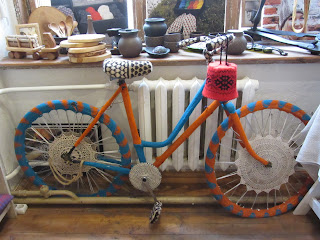












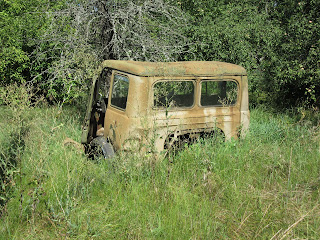





















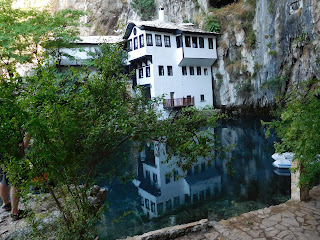









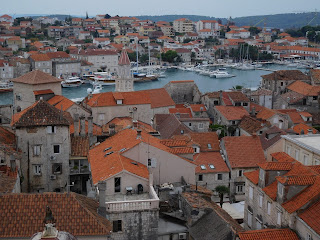



















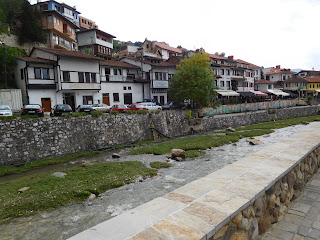




















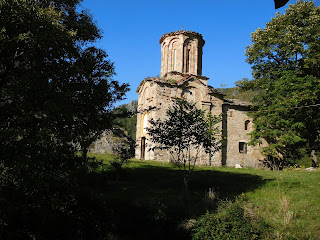




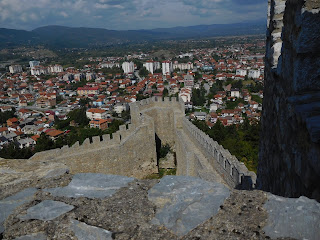


Wow, Annie. What a collection! Lovely pics you've taken. Thank you for sharing! xx
ReplyDelete